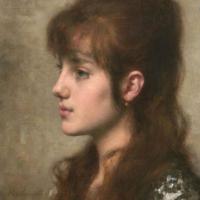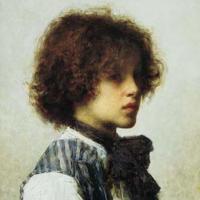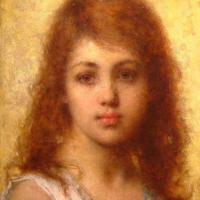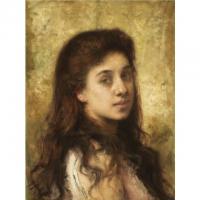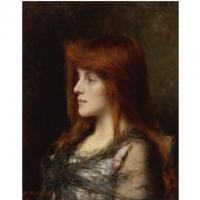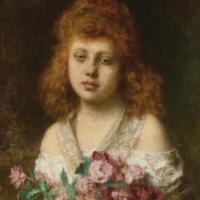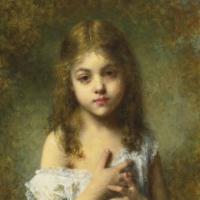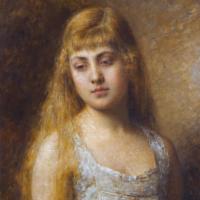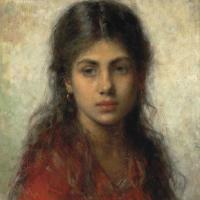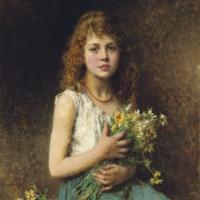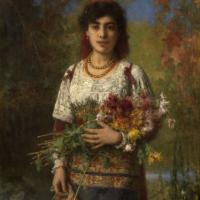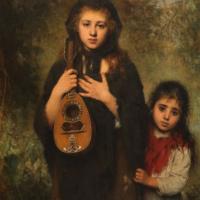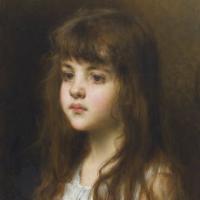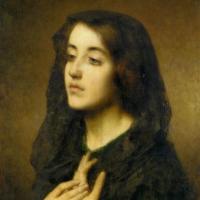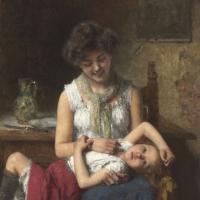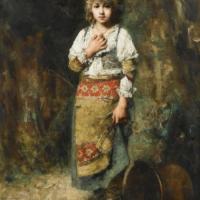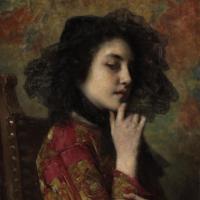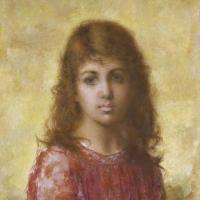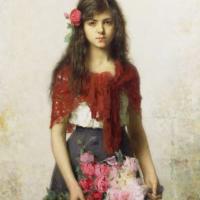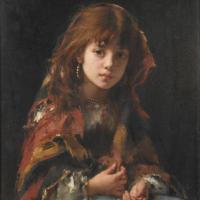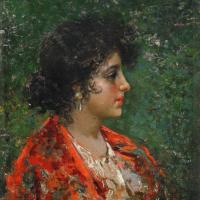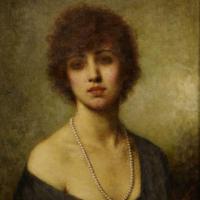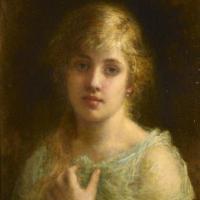Alexei Harlamoff
A Young Beauty
$480.00
A Young Boy
$480.00
Amber Beauty
$480.00
An Auburn Haired Young Woman
$480.00
Auburn Haired Beauty
$480.00
Childhood
$480.00
Felia Litvinne
$480.00
Girl With A Red Shawl
$480.00
Girl With Spring Flowers
$480.00
Gypsy Girl With Flowers
$480.00
Innocence .Bmp
$480.00
La Cigate
$480.00
La Petite Russe
$480.00
Modesty
$480.00
Moody Girl
$480.00
Mordovian girl
$480.00
Portrait of a Young Lady
$480.00
Portrait Of Felia Litvinne
$480.00
Alexei Harlamoff
Alexei Harlamoff (1840-1925)
Alexei Alexeievich Harlamov (also Alexej Harlamoff, Alexei Kharlamoff or Alexej Charlamoff) (1840–1925) was a Russianpainter, who usually signed his name in the latin alphabet as Harlamoff.
Alexei Harlamoff was born into a family of serfs on 18 October 1840 in the village of Dyachevka near Saratov on the River Volga. In 1850 Harlamoff’s parents won their freedom. Harlamoff became a guest student at the Imperial Academy of Arts in Saint Petersburg in 1854. Three years later he was awarded a second class silver medal for a drawing.
In 1862 Harlamoff was awarded a second class silver medal for a sketch, and he enrolled with the historical painter Alexey Tarasovich Markov. In 1863 he was awarded two first class silver medals, for a drawing and for a sketch. In 1865 he presented his large scale painting Ananias before the Apostles, but did not win the competition for a second class gold medal. The next year however he did win this award, for his painting Baptizing of the Kiever. He completed his studies in 1868, winning a first class gold medal for his Return of the Prodigal Son, and was granted a scholarship from the academy to study in Paris in 1869.
In 1870 Tsarina Maria Alexandrovna bought one of Harlamoff's paintings.
From Spring 1871 to Autumn 1872 Harlamoff copied The Anatomy Lesson of Dr. Tulp in a drawing and in oil. During the summer of 1871 he returned to Normandy. In November 1872 the Imperial Academy in Saint Petersburg paid him 1,500 roubles for the copy of Rembrandt.
In 1872 Harlamoff met Léon Bonnat and visited his independent studio. He was also awarded a bronze medal at the Vienna Universal Exhibition.
By 1874 Harlamoff was living at rue Fontaine 42. He took part in the spring exhibition of the Imperial Academy of Arts. His portrait of the engraver Pozhalostin won him the title of art academy member. He then travelled to Veules-les-Roses and Étretat. In October Turgenev wrote that Harlamoff had completed the portrait of Pauline Viardot, for which he was paid 3.000 FFR, leading to an increase of his fees for a portrait up to 10.000 FFR (around 3.000 roubles).
In 1878 Harlamoff exhibited his paintings at the Salon and at the Universal Exhibition in Parissimultaneously. His portrait of Alexander F. Onegin was awarded a second class medal.
In 1879 Peter F. Iseyev asked Harlamoff to collaborate on decorating the Cathedral of Christ the Saviour in Moscow. He was also invited to exhibit at the elitist "Cercle de l’Union artistique" ("Club des Mirlitons").
In 1888, on Bogolyubov's suggestion, Vladimir Stasov exhibited Harlamoff’s portrait of Turgenev at an Itinerant Art Exhibition. He was also exhibited at the International Exhibition in Glasgow, where Queen Victoria was reportedly impressed by his paintings. The next year Harlamoff joined the organizing committee of the Universal Exhibition in Paris, where he showed eleven of his paintings that year.
In 1891 Harlamoff organized the 50-year jubilee of Bogoliubov’s activity. At the 19th Itinerant Art Exhibition in Saint Petersburg Tsarina Maria Fedorovna purchased his painting Portrait of a Young Girl. When Bogolyubov died in 1896 Harlamoff was nominated chairman of the Association of Russian Artists for the Mutual Support and Benefaction with its seat in Paris. In 1900 Harlamoff was appointed Chevalier of the Legion of Honour. He exhibited again at the Universal Exhibition in Paris, and after a break of eight years he participated again in the Itinerant Art Exhibition. In 1902 Harlamoff was awarded the medal of St. Vladimir (4th Class).
In 1909 Harlamoff moved to his new studio, Boulevard de Rochechouart, 57bis. Between 1911 and 1914 Harlamoff participated in exhibitions with Galerie Lemercier in Moscow. In 1922 Felia Litvinne showed the works of Harlamoff in her salon in Paris. Harlamoff died on 10 April 1925 in his studio on Boulevard de Rochechouart with Litvinne as his sole heir.


